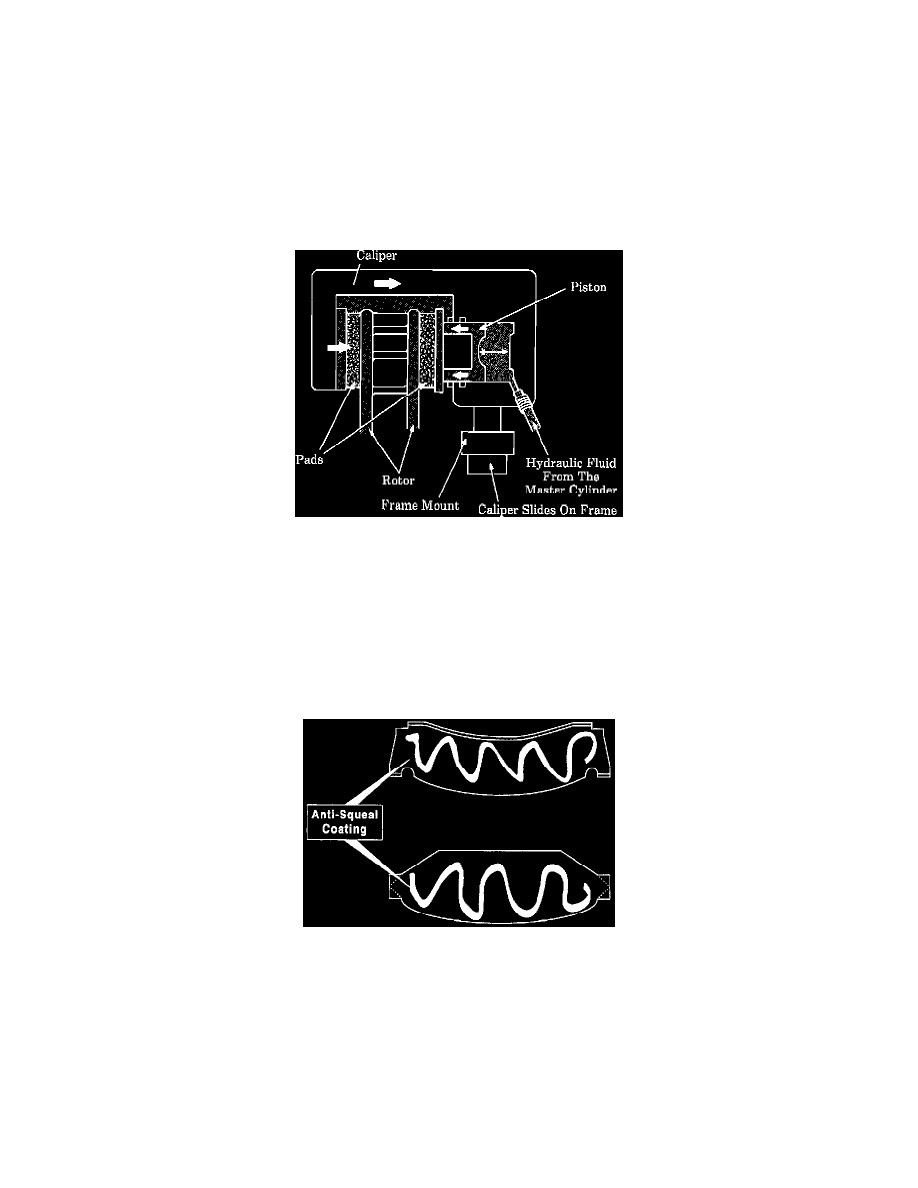PB 150 V8-318 5.2L VIN T 2-BBL (1983)

Brake Caliper: Fundamentals and Basics
Installation Notes
WHEN INSTALLING CALIPERS AND PADS, REMEMBER...
-
Clean and lubricate caliper slide joint/pins with high temperature silicone grease:
Unlike drum brakes, disc brakes do not utilize a spring to withdraw the pads/linings when the brake pedal is released. Disc brakes rely on the
elasticity of the piston seals, and the unrestricted movement of the caliper slide assemblies to release the brakes.
If the slide joints/pins are not cleaned and lubricated properly the disc brake linings will drag upon the release of the brake pedal. This will
result in overheated brakes and premature brake wear.
Disc Brake Mechanical Force Diagram
NOTE: Floating calipers require free and unrestricted movement on the caliper mounting. Floating or sliding calipers have pistons only
on one side of the rotor. The first part of the piston's travel forces the inner pad against the rotor, then further travel forces the movable part
of the caliper to pull the outer pad against the rotor.
High temperature silicone lubricant must be used. Low temperature grease can melt and contaminate the pads and rotors, or can bake into a
very hard substance which binds the slides. Petroleum based grease can cause the slide boots to soften and swell.
-
Work on one side at a time. If you forget how to reassemble the parts you can always use the other side as a model.
Anti-squeal Coating
-
Apply an anti-squeal coating to the back side of the pads/linings. This coatings acts as an insulator to dampen high frequency vibrations that are
generated during normal braking. These compounds are highly effective in preventing brake squeal.
-
Many professional repair shops recommend always rebuilding or replacing the calipers when replacing the brake linings, because:
When the pistons are forced back into the calipers, the piston seals are dragged across any corrosion or abrasives that may be deposited on the
inside of the caliper.
Damage to the seals may not be initially evident. As the new brake linings begin to wear, the piston is gradually withdrawn from the caliper.
This results in the piston seals again being dragged across the layer of corrosion and deposits.
